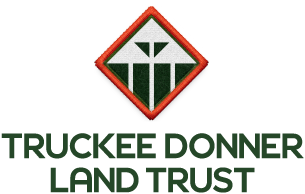End of Year Reflections from the Executive Director
Executive Director Perry Norris skiing on Donner Summit
As 2019 comes to a close and the Land Trust enters our 30th year, I can’t help but look back not only on all we’ve achieved this year, but on all that we’ve accomplished together over the last three decades. This year we successfully raised funds for the acquisition of Frog Lake, Red Mountain and Carpenter Ridge – a project that reflects the way so many of our conservation deals come together.
I first visited Frog Lake in 2006 at the invitation of its owners – two brothers whose father purchased the property from the railroad in 1932. They wanted to explore selling their 680-acre property. At the time, the Land Trust didn’t make the cut when they listed the property for a price that could not be substantiated by an appraisal. Fast-forward to 2019, and we’re set to conserve Frog Lake, Red Mountain and Carpenter Ridge – totaling nearly 3,000 acres – in June 2020.
This is not an atypical story. It often feels as if we work at glacial speed. Even Royal Gorge – a $12 million deal completed in a dizzying six-months – had been on the Land Trust’s wish-list since long before I arrived 20 years ago.
Why do deals like this take so long? The Land Trust usually needs a 24-months to raise the funds to buy and manage a new property. But that’s not the reason. The reason resides, in a very good way, with the seller. For the owners of Frog Lake, like many sellers before them, it took more than ten years to accept the idea of parting with such an important part of their family’s legacy. But when they do, they choose the Land Trust because we are the best way to preserve that legacy.
Webber Lake and Lacey Meadow went much the same way – Clifton Johnson inherited the property from his father, who bought it from Joe Perazzo in the 1870s (sight unseen, Cliff told me, because Joe knew good dirt). The family drove thousands of sheep from their ranch in Folsom up to Lacey Meadows each summer. Cliff and his wife Barbara were not willing to sell to just any buyer. In fact, it took more than a year of visiting the Johnsons, with cookies and chicken soup in-hand, to convince them the Land Trust’s intentions for the property aligned with theirs – keeping it as it was and making it available for the public to enjoy. In the end, they turned down more lucrative offers and made a sizable donation to the Land Trust in order to preserve the land they loved.
Reverence for a special place is not uncommon – whether its Cliff and Barbara Johnson in a 1,000-square-foot cabin tending to their sheep or the Smith brothers spending their summers as kids jumping into Frog Lake. But you don’t have to be a land owner to have a keen and deep sense that you belong to a place. Maybe it’s a verdant meadow your parents first brought you to as a child, a favorite trail, a fishing spot or a place your dog loves to chase sticks.
What brings us together – buyer and seller, donor and volunteer – is places that mean so much to us. We hope this merits your continued support into 2020, and we look forward to preserving and sharing new special places where you will bring your children or your friends, making new connections to these places we all cherish.

